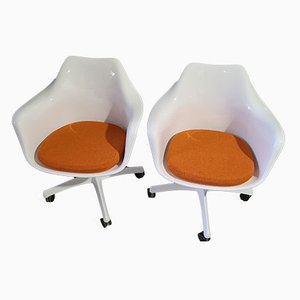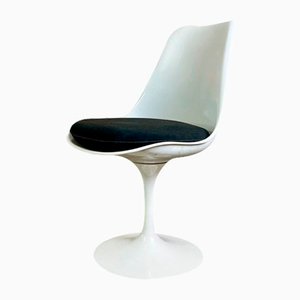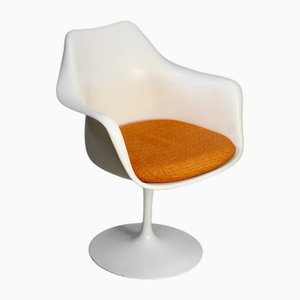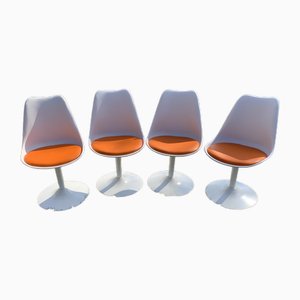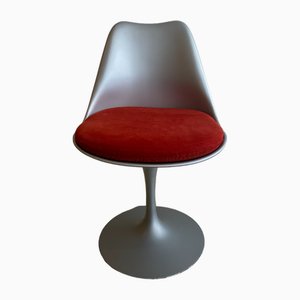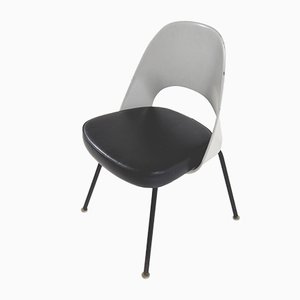
Eero Saarinen (1910-1961) was a Finnish-born American industrial designer and architect who helped pioneer the neo-futurism style and redefining modernism in midcentury America. Son to influential architect Eliel Saarinen (1873-1950) and sculpturist and textile designer Lola Gesellius Saarinen (1879-1968), Saarinen from an early age exhibited a strong interest in design and architecture. At the age of thirteen, he and his family emigrated to America, where he went on to study sculpture and furniture design at the Bauhaus-inspired Cranbrook Academy of Art in Michigan. (His father taught there as well.) There he befriended future design luminaries Charles Eames (1907–1978) and Florence Knoll (née Schust, b. 1917). In 1929, he continued his education at Paris’s Académie de la Grande Chaumière, and subsequently at Yale University, graduating with a degree in architecture in 1934.
In 1936, Saarinen joined his father’s architectural practice, which was renamed Eero Saarinen & Associates after his father passed in 1950. His well-known projects include the Gateway Arch in St. Louis, Missouri (1947); the General Motors Technical Center in Warren, Michigan (1956); the main terminal of Dulles International Airport in Washington, D.C. (1958); and the TWA Terminal at Kennedy International Airport (1962).
Beyond Saarinen’s many architectural accomplishments, he also maintained a successful career in furniture design. In 1940, working in collaboration with Charles Eames, he designed a collection of plywood chairs, which won first prize in all categories for the Organic Design in Home Furnishings competition sponsored by the Museum of Modern Art in New York. Though the chairs never made it into production, Saarinen designed many other iconic pieces for friends Hans and Florence Knoll, including the Grasshopper Lounge Chair and Ottoman (1946), Womb Chair and Ottoman (1948), and the Tulip Collection (1956)—arguably his most famous series which featured and , as well as , , and .
Saarinen died at the age of 51 during surgery to remove a brain tumor. His business partners Kevin Roche and John Dinkeloo at Saarinen & Associates completed his ten remaining projects.
Designing in postwar America, Saarinen is known for introducing curvilinear and organically-inspired forms into both his architecture and industrial designs. Over the course of his career, Saarinen received many awards and accolades, including becoming a fellow of the American Institute of Architecture in 1952 and winning the AIA Gold Medal posthumously in 1962. Saarinen’s designs have been featured in exhibitions around the world, including the National Building Museum in Washington D.C. and the Museum of Finnish Architecture in New York.

